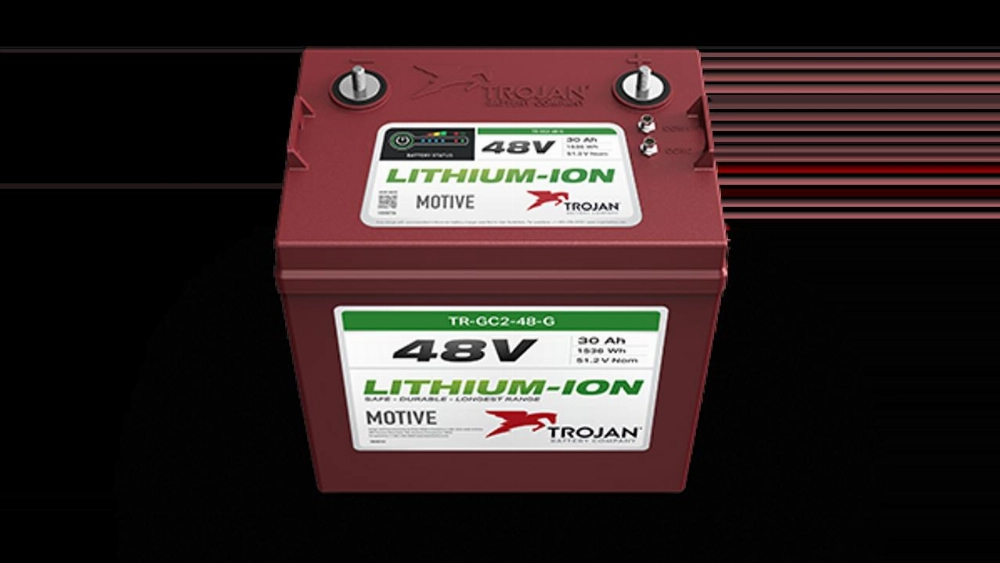If you’re in the market for a new battery, you may have come across the term “Group 48 battery.” But what does it actually mean? In this guide, we’ll delve into everything you need to know about Group 48 batteries. From their dimensions and voltage to their applications and advantages, we’ll cover it all to help you make a more informed purchasing decision. We’ll also discuss the benefits of upgrading to Group 48 lithium and deep cycle batteries.
Part 1: What is a Group 48 Battery?
A Group 48 battery refers to a specific size classification defined by the Battery Council International (BCI). This classification helps standardize battery sizes and specifications, making it easier to find a compatible battery for your vehicle or other equipment. Group 48 batteries are widely used in automotive applications due to their reliable performance and suitable size.
Part 2: Dimensions
The dimensions of a Group 48 battery are standardized to ensure they fit perfectly into the designated space in various vehicles and equipment. Typically, a Group 48 battery measures approximately 12.1 inches in length, 6.9 inches in width, and 7.5 inches in height. These dimensions make them well-suited for many modern cars and SUVs.
Understanding the exact dimensions of the battery you need is crucial to ensure compatibility with your vehicle’s battery tray, preventing any installation issues.
Part 3: Types of Group 48 Batteries
Group 48 batteries come in several different types, each with its own advantages and disadvantages. The main types include:
- Flooded Lead-Acid Batteries (Wet Cell): These are traditional, commonly used batteries that require regular maintenance. They are cost-effective but need regularly topping up with distilled water.
- AGM (Absorbent Glass Mat) Batteries (also known as VRLA or Valve-Regulated Lead-Acid): These sealed, maintenance-free batteries offer better performance and durability than flooded lead-acid batteries. They are spill-proof and can handle higher power demands.
- Lithium Batteries: Although less common in the Group 48 size, lithium batteries offer superior performance, longer lifespan, and minimal maintenance. While they tend to be more expensive, their long-term value makes them a worthwhile investment. If you’re interested in the benefits of lithium batteries, you can learn more about lithium iron phosphate battery vs lithium ion.
Part 4: Voltage
The standard voltage for a Group 48 battery is 12 volts. This voltage is typical for automotive applications, providing the necessary power to start the engine and operate electrical systems. A stable 12-volt output ensures reliable performance for vehicles and equipment.
Part 5: Capacity
Battery capacity is an important consideration as it determines how much energy the battery can store. The capacity of a Group 48 battery is measured in Amp-Hours (Ah) and typically ranges from 60 to 75 Ah. A higher capacity means the battery can provide power for a longer period before requiring a recharge.
Part 6: Price
The price of Group 48 batteries can vary depending on the type and brand. On average, you can expect to pay anywhere from $100 to $250. Flooded lead-acid batteries are generally the most affordable, while AGM and lithium batteries are more expensive due to their advanced features and longer lifespan.
Part 7: Applications of Group 48 Batteries
Group 48 batteries are versatile and suitable for a variety of applications, including:
- Automotive: Commonly used in cars, trucks, and SUVs for starting, lighting, and ignition (SLI – the battery’s primary function in vehicles) purposes.
- Marine: Some boats rely on Group 48 batteries to start the engine and power onboard electronics.
- Recreational Vehicles (RVs): Group 48 batteries are used in RVs to power appliances and systems when the vehicle is not connected to an external power source.
- Backup Power Systems: Group 48 batteries are also used in backup power systems for homes and businesses, providing emergency power during outages.
Part 8: Group 48 Lithium Batteries
Group 48 lithium batteries are becoming increasingly popular due to their numerous advantages over traditional lead-acid batteries. They offer a longer lifespan, faster charging times, and minimal maintenance requirements. While they have a higher upfront cost, their long-term benefits, including reliability and cost-effectiveness, make them a compelling choice for many applications.
## Part 1: Introduction to Group 48 Batteries
Group 48 batteries are a popular type of battery widely used in various applications. These batteries provide reliable power, making them ideal for automobiles, boats, RVs, and backup power systems. Choosing the right Group 48 battery for your needs is crucial for ensuring optimal performance and a longer lifespan.
Part 2: Types of Group 48 Batteries
Group 48 batteries come in different chemistries, primarily lead-acid and lithium. Each type has its unique advantages, making it suitable for specific application requirements.
- Lead-Acid Batteries: These are traditional battery types with a good track record of reliability. They are affordable but require more maintenance compared to lithium batteries.
- Lithium Batteries: As an emerging technology, lithium batteries offer several advantages over lead-acid batteries, such as a longer lifespan, lighter weight, and higher efficiency.
Part 3: Key Specifications of Group 48 Batteries
When selecting a Group 48 battery, it is important to consider the following specifications:
- Voltage: Group 48 batteries typically operate at 12 volts.
- Capacity: The battery’s capacity is measured in amp-hours (Ah), indicating the battery’s energy storage capacity.
- Cold Cranking Amps (CCA): This measures the battery’s ability to deliver the power needed to start an engine in cold temperatures, a critical factor in colder climates.
- Reserve Capacity (RC): This indicates how long the battery can continue to power essential systems if the alternator fails, providing a safety net in emergencies.
Part 4: Advantages of Group 48 Lithium Batteries
Upgrading to a Group 48 lithium battery offers several advantages over lead-acid batteries:
- Longer Lifespan: Can last for 10 years or more, significantly longer than lead-acid batteries.
- Lightweight: Lithium batteries are significantly lighter, making them easier to handle and install.
- Higher Efficiency: Lithium batteries offer higher energy storage efficiency.
Key Tips for Extending the Life of Your 48-Type Battery
The 48-type battery is carefully designed to provide long-lasting and durable performance when properly maintained. While modern batteries are mostly designed to be maintenance-free, regular maintenance can still further extend their lifespan. By following these guidelines, you can maximize the potential of your 48-type battery and ensure the smooth operation of your vehicle or equipment.
Related Tag Words:
- KHZH (Unidentified)
- Battery Maintenance
Related Articles
How to Safely Clean Leaking Battery Leads: A Step-by-Step Guide
This comprehensive guide provides safety precautions, risk awareness, and effective cleaning techniques to help you safely handle leaking battery leads.
Portable Battery Charger vs. Power Bank: Understanding the Difference
A portable battery charger is a general term for various mobile charging devices, while a power bank stores electrical energy internally and can charge devices without being directly connected to a power source.
The Ultimate Guide to Using Lithium-Ion Jump Starters
Lithium-ion jump starters are essential tools for roadside emergencies. This detailed guide covers their safe use, maintenance, and why they are a worthwhile investment.
What is a Portable Battery Charger?
Portable battery chargers ensure your devices stay powered on the go. This guide provides a simple and easy-to-understand introduction to its functions, materials, and operation.
How to Choose the Best Battery Pack for Your Needs: Capacity, Performance, and More
Choosing the right battery pack is crucial for performance and reliability. This guide covers essential factors—capacity, performance, safety, etc.—to help you make the best decision.








